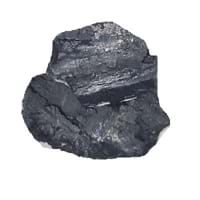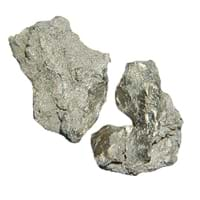Praseodymium vs Zirconium
Periodic Table
Symbol
Pr
Zr
Group Number
Not Available
4
14
Period Number
6
5
Block
f block
d block
Element Family
Lanthanide
Transition Metal
CAS Number
7440100
99+
7440677
23
Space Group Name
P63/mmc
P63/mmc
Space Group Number
194.00
5
194.00
5
Facts
Interesting Facts
- Praseodymium metal is synthetically produced metal.
- Praseodymium is used as possible fuel for radioactive generators.
- Zirconium metal can resist to weak acids.
- Zirconium metal reacts with oxygen and nitrogen in the atmosphere.
Sources
Found in Minerals, Mining, Ores of Minerals
Found in Minerals, Mining, Ores of Minerals
History
Who Discovered
Not Available
Martin Heinrich Klaproth
Discovery
In 1885
In 1789
Abundance
Abundance In Universe
2 * 10-7 %
22
5 * 10-6 %
13
Abundance In Sun
~0.0000001 %
26
~0.000004 %
16
Abundance In Meteorites
0.00 %
40
0.00 %
17
Abundance In Earth's Crust
0.00 %
27
0.01 %
14
Abundance In Oceans
0.00 %
39
0.00 %
23
Abundance In Humans
Not Available
0.00 %
15
Uses
Uses & Benefits
- The main use of Praseodymium include alloys. Praseodymium –Magnesium alloy is used in aircraft engines due to its high strength.
- This metal is also used while making a permanent magnets.
- As this metal does not absorb neutrons; It is used in nuclear power stations.
- Its oxide is used in ultra strong ceramics. It is also used in manufacturing Crucibles.
Industrial Uses
Chemical Industry
Aerospace Industry, Ammunition Industry
Medical Uses
NA
NA
Other Uses
Alloys
Alloys, Nuclear Research, Research Purposes
Biological Properties
Toxicity
Moderately Toxic
NA
Present in Human Body
No
Yes
In Blood
Not Available
0.01 Blood/mg dm-3
21
In Bone
Not Available
0.10 p.p.m.
23
Physical Properties
Melting Point
935.00 °C
99+
1,852.00 °C
15
Boiling Point
3,130.00 °C
27
4,377.00 °C
11
Appearance
Physical State
Solid
Solid
Color
Grayish White
Silvery White
Luster
Metallic
Lustrous
Hardness
Mohs Hardness
Not Available
5.00
8
Brinell Hardness
481.00 MPa
24
638.00 MPa
19
Vickers Hardness
400.00 MPa
25
820.00 MPa
15
Speed of Sound
2,280.00 m/s
40
3,800.00 m/s
20
Optical Properties
Allotropes
No
No
α Allotropes
Not Available
Not Available
β Allotropes
Not Available
Not Available
γ Allotropes
Not Available
Not Available
Chemical Properties
Chemical Formula
Pr
Zr
Isotopes
Known Isotopes
31
8
24
15
Electronegativity
Pauling Electronegativity
1.13
99+
1.33
30
Sanderson Electronegativity
Not Available
0.90
25
Allred Rochow Electronegativity
1.07
32
1.22
26
Allen Electronegativity
Not Available
1.32
34
Electropositivity
Pauling Electropositivity
2.87
12
2.67
24
Ionization Energies
1st Energy Level
527.00 kJ/mol
99+
640.10 kJ/mol
99+
2nd Energy Level
1,020.00 kJ/mol
99+
1,270.00 kJ/mol
99+
3rd Energy Level
2,086.00 kJ/mol
99+
2,218.00 kJ/mol
99+
4th Energy Level
3,761.00 kJ/mol
99+
3,313.00 kJ/mol
99+
5th Energy Level
5,551.00 kJ/mol
29
7,752.00 kJ/mol
10
6th Energy Level
Not Available
9,500.00 kJ/mol
15
Electrochemical Equivalent
1.75 g/amp-hr
40
0.85 g/amp-hr
99+
Electron Work Function
2.70 eV
99+
4.05 eV
26
Other Chemical Properties
Anti Corrosion, Ionization, Radioactive Isotopes
Anti Corrosion, Flammable, Ionization, Radioactive Isotopes, Solubility
Atomic Properties
Atomic Number
59
99+
40
99+
Electron Configuration
[Xe] 4f3 6s2
[Kr] 4d2 5s2
Crystal Structure
Hexagonal Close Packed (HCP)
Hexagonal Close Packed (HCP)
Crystal Lattice
HCP-Crystal-Structure-of-Praseodymium.jpg#100
HCP-Crystal-Structure-of-Zirconium.jpg#100
Atom
Number of Protons
59
99+
40
99+
Number of Neutrons
82
99+
51
99+
Number of Electrons
59
99+
40
99+
Radius of an Atom
Atomic Radius
182.00 pm
11
160.00 pm
27
Covalent Radius
203.00 pm
9
175.00 pm
23
Van der Waals Radius
239.00 pm
14
200.00 pm
28
Atomic Weight
140.91 amu
99+
91.22 amu
99+
Atomic Volume
20.80 cm3/mol
15
14.10 cm3/mol
36
Adjacent Atomic Numbers
Valence Electron Potential
42.64 (-eV)
99+
80.00 (-eV)
18
Lattice Constant
367.25 pm
29
323.20 pm
99+
Lattice Angles
π/2, π/2, 2 π/3
π/2, π/2, 2 π/3
Lattice C/A Ratio
1.61
4
1.59
8
Mechanical Properties
Density
Density At Room Temperature
6.77 g/cm3
99+
6.52 g/cm3
99+
Density When Liquid (at m.p.)
6.50 g/cm3
39
5.80 g/cm3
99+
Tensile Strength
Not Available
330.00 MPa
12
Viscosity
Not Available
Not Available
Vapor Pressure
Vapor Pressure at 1000 K
0.00 (Pa)
25
Not Available
Vapor Pressure at 2000 K
13.20 (Pa)
7
0.00 (Pa)
21
Elasticity properties
Shear Modulus
14.80 GPa
39
33.00 GPa
20
Bulk Modulus
28.80 GPa
40
91.10 GPa
17
Young's Modulus
37.30 GPa
99+
88.00 GPa
22
Poisson Ratio
0.28
16
0.34
10
Other Mechanical Properties
Ductile, Malleable
Ductile, Malleable
Magnetic Properties
Magnetic Characteristics
Specific Gravity
6.77
99+
6.51
99+
Magnetic Ordering
Paramagnetic
Paramagnetic
Electrical Properties
Electrical Property
Conductor
Conductor
Resistivity
0.70 nΩ·m
99+
421.00 nΩ·m
11
Electrical Conductivity
0.01 106/cm Ω
99+
0.02 106/cm Ω
99+
Electron Affinity
50.00 kJ/mol
21
41.10 kJ/mol
27
Thermal Properties
Specific Heat
0.19 J/(kg K)
32
0.27 J/(kg K)
19
Molar Heat Capacity
27.20 J/mol·K
18
25.36 J/mol·K
99+
Thermal Conductivity
12.50 W/m·K
99+
22.60 W/m·K
99+
Critical Temperature
Not Available
Not Available
Thermal Expansion
6.70 µm/(m·K)
99+
5.70 µm/(m·K)
99+
Enthalpy
Enthalpy of Vaporization
296.80 kJ/mol
29
581.60 kJ/mol
9
Enthalpy of Fusion
6.89 kJ/mol
99+
20.90 kJ/mol
11
Enthalpy of Atomization
368.00 kJ/mol
24
598.00 kJ/mol
10
Standard Molar Entropy
73.20 J/mol.K
10
39.00 J/mol.K
39
|
||
|
||
|












